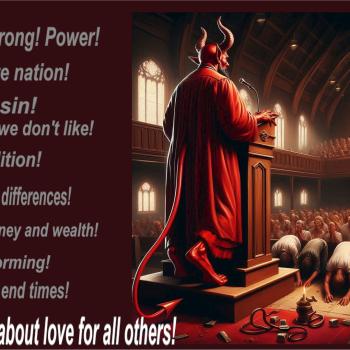I am highlighting such themes because they are weirdly resonant with the phenomenon of the alien in twentieth-century America. As the ufologist knows, the alien experience is suffused with an insectoid pattern that is in turn linked to an evolutionary schema. Hence the spaceships or the aliens themselves are often described as "buzzing" like bees or large flies, and they often appear to share a hivelike communal mind, two features emphasized as early as 1950 by British American writer Gerald Heard, who also, by the way, wrote extensively about psychical powers, was inspired by Indian philosophy, and was committed to an evolutionary mysticism.[iv]
Moreover, in countless cases, the aliens are described as either super-evolved humanoids or as instectoid, or, combining these two themes now, as humanlike insects. Hence the last century's most famous and eloquent abductee, Whitley Streiber, who consistently described the
"visitors" whom he encountered as insectlike, hivelike, or, in one scene, a "terrible insect" that "rose up beside the bed like some huge, predatory spider" (T 181). When another abductee, this one interviewed by Harvard psychiatrist John E. Mack, drew what she had encountered, she sketched what amounted to a humanoid bug.
Or an alien Spider-Man. This is where things get a bit uncanny. Spider-Man, after all, is the humanoid insect par excellence. Moreover, his iconic wraparound eyes—created in 1962 by Marvel monster artist Steve Ditko in Amazing Fantasy #15—reproduce, almost perfectly, the classic almond eyes of the alien. With the exception of Superman's S, there is no superhero symbol more beloved and more iconic than Spidey's eyes.
Is it possible that Ditko's Spidey eyes informed the later abduction accounts of the mid-1960s, '70s, and '80s? The dates certainly make this possible. The first major published study of an alien abduction, Saturday Review columnist John G. Fuller's classic The Interrupted Journey (1966), recounts the September 1961 abduction of Barney and Betty Hill, complete with multiple descriptions of the aliens as possessing large foreheads, slits for mouths, and bluish gray or metallic skin. Most of all, though, especially for Barney, there were the awed descriptions of those haunting, vaguely Oriental or Asiatic "slanted" eyes.
Barney drew these eyes from within a hypnotic trance state: the sketch looks like a child's drawing of Spider-Man's head (with pupils now). In another passage, he describes how everything disappeared except a single eye, like, he points out, the Cheshire cat in Alice in Wonderland: "this growing, one-beam eye, staring at me, or rather not staring at me, but being a part of me." These eyes did strange things too. They "spoke" to him telepathically and told him not to be afraid. They carried a subtle smile. They "pushed" into his eyes as they came closer and closer. And they "burned" into his senses and left "an indelible imprint."[v] Such descriptions were drawn from hypnosis and therapeutic sessions that took place the first six months of 1964, well after Spider-Man's first appearances, month after month, on the magazine racks of America. So the door of influence is left open here.
There are other likely pop-cultural sources. In "Gauche Encounters: Bad Films and the UFO Mythos," Martin Kottmeyer traces the specifics of Betty's dream-vision (big alien noses, examination tables, needles, and star maps) back to the imagery of the B-movie Invaders from Mars (1953) and Barney's wraparound eyes to an episode of the PBS series The Outer Limits entitled "The Bellero Shield" (February 10, 1964). The latter episode, it turns out, aired just twelve days before the hypnosis session that produced this key iconic feature.[vi] And this is just the beginning: in case after case, Kottmeyer shows how this or that detail of this or that famous abduction looks a lot like this or that movie scene. In the end, his claim that it is "the badfilm buff" who has the privileged perspective on all things alien and abducted is difficult to counter. He has effectively reduced the paranormal to popular culture.
But is it really that simple? We have already seen Barney invoking Alice in Wonderland. Similarly, Betty herself reports asking Barney, after he has looked in astonishment at the thing in the sky through a pair of binoculars and realizes that the occupants of the craft have seen them and are coming after them, if he had watched a Twilight Zone episode recently. He doesn't answer.[vii] My point is this: Barney and Betty's experiences on the road clearly rendered any such simple explanations patently inadequate for them. They were perfectly aware of the possible pop-cultural influences, but these could not possibly explain the full contact experience.
This historian of religions can only agree. Many traditional religious encounters, after all, are equally "gauche" in their use of gaudy art. But just because something is encountered through the imagery of bad movies or sappy religious art does not mean that what is being encountered is a bad movie or a pious painting; it might simply mean that all religious experience is culturally conditioned, and that the human imagination often draws on the most immediate, not to mention the most colorful, to paint and frame an encounter with the sacred. It is a lesson well worth learning early in our Super-Story: trauma and Technicolor, God and the gauche, are not mutually exclusive.




